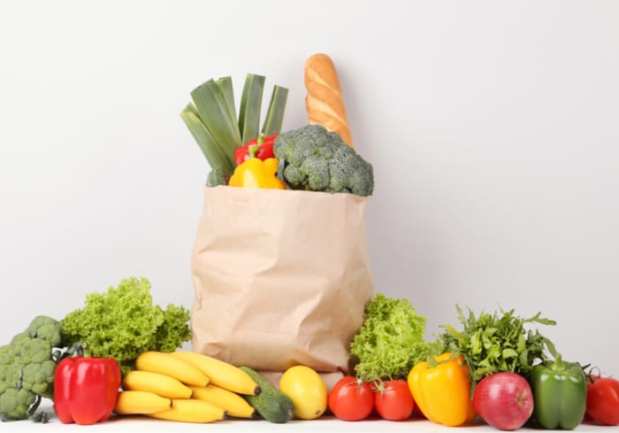Inside Amazon’s Play For Grocery Dominance

Amazon is making a bigger play for grocery, one that reportedly involves opening physical stores in multiple big U.S. cities, an effort that comes as the eCommerce operator continues to make the most of its Whole Foods acquisition.
As PYMNTS data shows in depth, Amazon has a lot of room to grow in grocery, to gain ground on competitors and work toward the type of relative dominance it has in other retail categories. Amazon also aims to appeal to the vast majority of shoppers who still prefer to do their grocery shopping inside physical stores.
In the latest news, the Amazon grocery stores – reportedly to be located in such cities as Los Angeles, Chicago and Washington, D.C. – will diverge from the company’s Whole Foods Market brand. Sources quoted by The Wall Street Journal said the retailer’s planned new grocery store locations are not designed to be direct rivals with Whole Foods, and will offer a different, lower-priced selection of items.
Grocery Share
According to the PYMNTS Amazon Paycheck Index, Amazon held an approximately 1.9 percent share of U.S. grocery spending by consumers. That compares to the approximately 19.1 percent share held by Walmart, one of Amazon’s main retail rivals, a chain with its own significant logistical expertise and scope. Those figures — and the gap between them — underscore how much ground Amazon must gain to achieve anything resembling a dominant position in grocery, where delivery and technology innovation are slowly but steadily transforming the traditional brick-and-mortar food-buying experience.
Amazon, of course, has a fierce advantage when it comes to retail spending, and not just for grocery items. Consumers say Amazon is the most convenient place for them to shop for and buy things. Amazon has become the default for how consumers start their search for what and where to buy things on the web.
That led to Amazon’s increasing command of the consumer’s paycheck, as documented by the PYMNTS Amazon Paycheck Index. For example, at a 32.7 annual growth rate over the last four years, Amazon is now the largest online seller of auto parts in the U.S. More generally, and as a bigger demonstration of Amazon’s power, the eCommerce operator accounts for 20 percent of all electronics, 9.7 percent of home furnishings, 9.3 percent of auto parts, 7.8 percent of apparel and 5.4 percent of sporting goods (which includes books, music and hobbies) sales. Those figures provide more evidence that over the last four years, retail sales have shifted to Amazon in key categories that were once the domain of the physical store.
Grocery, though, is another retail battlefield entirely, even though similar dynamics are in play.
Amazon Grocery Growth
As the Amazon Paycheck Index shows, over the last four years, Amazon has seen its sales of food and beverage products grow 106 percent – with most of that growth happening in the aftermath of the Whole Foods acquisition in 2017. Groceries are the largest single driver of consumer spend in the retail segment, and Amazon doubled its food and beverage sales from 2017 to 2018 after quadrupling them the prior year. Food is a category that we believe has the potential to capture more of the consumer’s spend over the next several years.
Logistics and loyalty are among the main drivers of that growth for Amazon – and it’s hard to imagine that not being the case in a year, or even five years, from now. For instance, Amazon has rolled out Prime programs and discounts to Whole Foods as part of the ongoing effort to bring that chain further into the Amazon commerce and payments ecosystem.
As well, Amazon keeps building its delivery fleets and enabling smaller firms to become part of its fulfillment system – factors that will certainly help spark even more grocery deliveries from the eCommerce operator. Among the hottest trends in the grocery space is testing out new, potentially more efficient forms of delivery – but given its logistical expertise in general, Amazon can certainly keep up with (if not lead) that part of the grocery game.
Physical Stores
That’s not all for Amazon when it comes to grocery, however. The eCommerce giant has opened Amazon Go stores in several cities to capture the food sales now going to convenience stores. Reports say that 3,000 more will open over the next several years.
And those openings point to another important part of the current race to gain more market share in the grocery retail sector: Consumers still go to grocery stores. Ninety-two percent of customers still shop for groceries in a physical store, according to the PYMNTS Enterprise Grocery Report, and 91.5 percent make their purchases there. By comparison, nearly 5 percent of consumers shop and pay for groceries online. The Index also found that shoppers older than 30 make 45 grocery trips per year, while consumers between 18 and 24 only make about 38 trips. That’s not to say consumers like going to grocery stores – but it strongly suggests that visiting those stores is more efficient than the current grocery delivery methods.
The coming months will bring more clarity – and probably more drama and innovation – to the grocery retail race, where Amazon and others continue to make aggressive moves.
